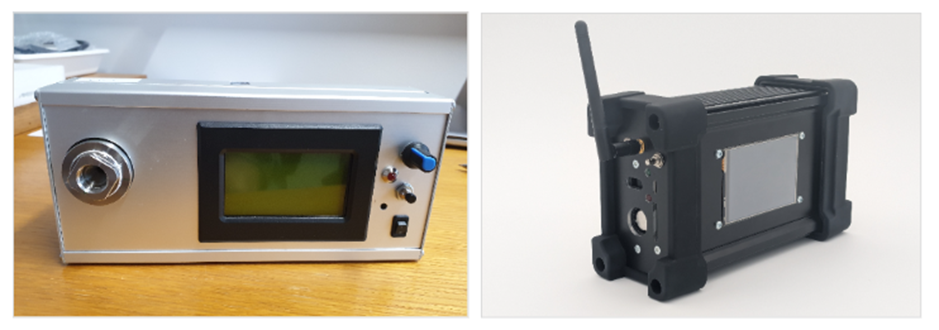Applied Research Projects
AeroDrops
AeroDrops (2025)
AeroDrops is the first device capable of selectively detecting airborne droplets in real time. The device detects and counts respiratory droplets, enabling smart, data-driven ventilation control that helps reducing infection risk – addressing a key public health challenge highlighted during the COVID-19 pandemic.
The technology was developed at the Jožef Stefan Institute. To raise the technology readiness level and bring solution closer to the market, the project received funding through RSF-IND call at JSI. Departments F5 and E6 are collaborating with industrial partners Nanotul d.o.o. and Comsensus d.o.o. to develop a market-ready device and further develop the technology.

TRAFOFLEX – Advanced concept of efficient use of transformers leveraging the DTR technology
OPERATO d.o.o. (2021-2023)
We estimate that in the Slovenian distribution approx. 100 transformer replacements per year occur, which are replaced before the end of their service life due to overloads. We have conservatively estimated that we can safely overload – according to the nominal value – transformers by 15%. With an average 2% increase in workload, this means that its replacement is delayed by 7 years. The average cost of replacing the transformer was taken in the amount of € 15,000. Based on this, we calculate the economics by calculating the investment lag (considering the 15-year period). In order to cover the whole of Slovenia with such systems, we estimate the investment at € 4.5 M (total cost of ownership – TCO for 15 years). With the assumptions used, the net benefits amount to approx. 4 M €, and the investment would be repaid in 4 years. The results of the first DTR tests for transformers show that it is possible to safely overload them in the coldest periods, when we usually have peak loads, even significantly more than 15%, so the savings can be even greater. We also do not mention here the benefits of asset management, which are still difficult to evaluate at the moment, as this task will develop the concept. The benefits of ELES have also not been evaluated, as they are difficult to extract from the comprehensive SUMO System which is already in use.

The project aims to increase the load capacity of transformers (TR) in a safe way, without adversely affecting the service life and thus gain, together with flexibility services, additional space for managing peak loads, especially on LV networks. So far, the calculation of DTR for TR has been performed only within the framework of ELES’ SUMO project for two cases of energy TR and for one case of distribution TR in TP of mast construction – in all cases TR was directly exposed to weather influences. In the framework of this project, we want to extend the applicability of the DTM model to the consideration of typical buildings in which TRs are located. The ultimate goal of the project is to develop and test the concepts of advanced use of transformers for the purposes of operation, flexibility market and asset management, and thus to prepare the ground for mass implementation of the technology.
